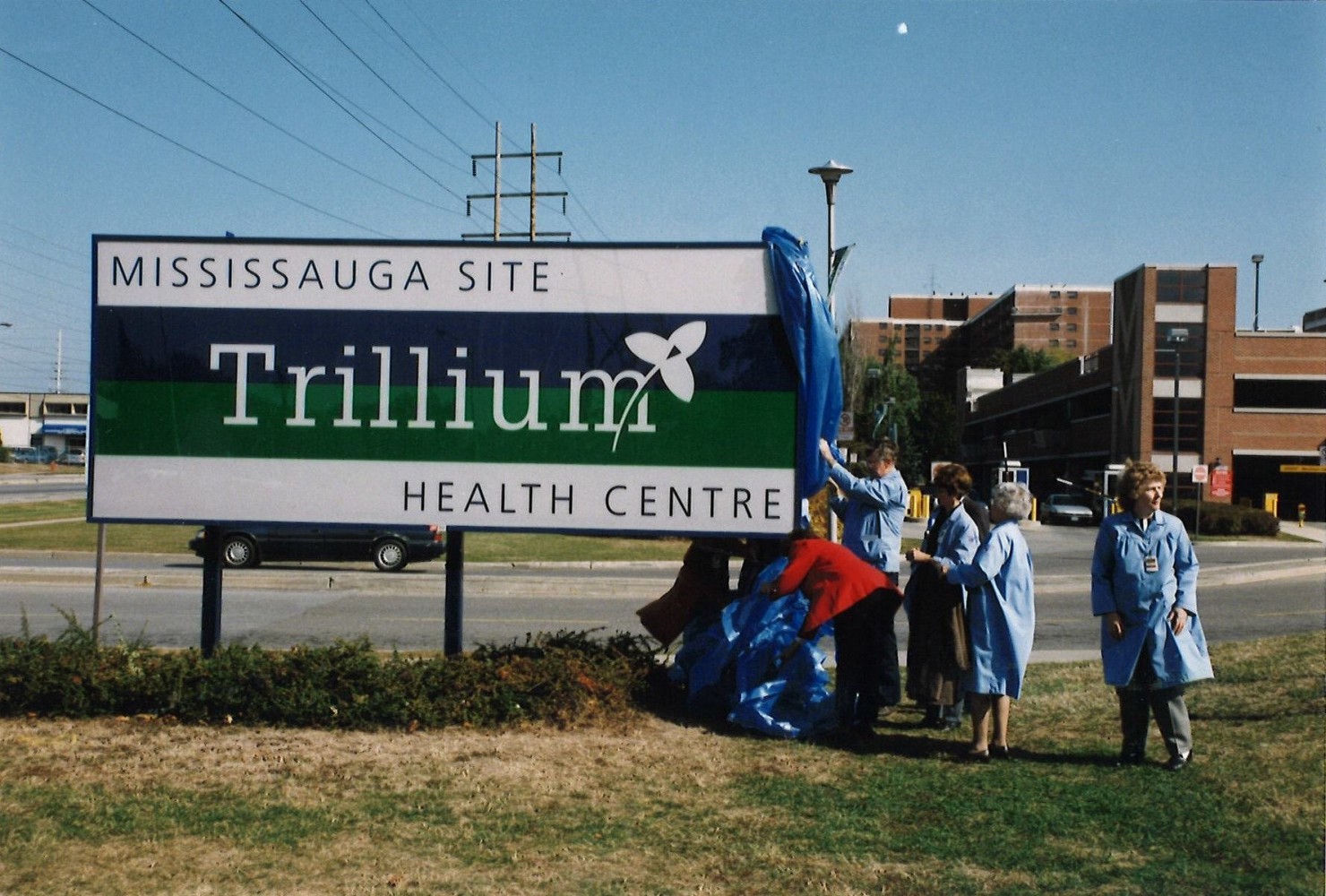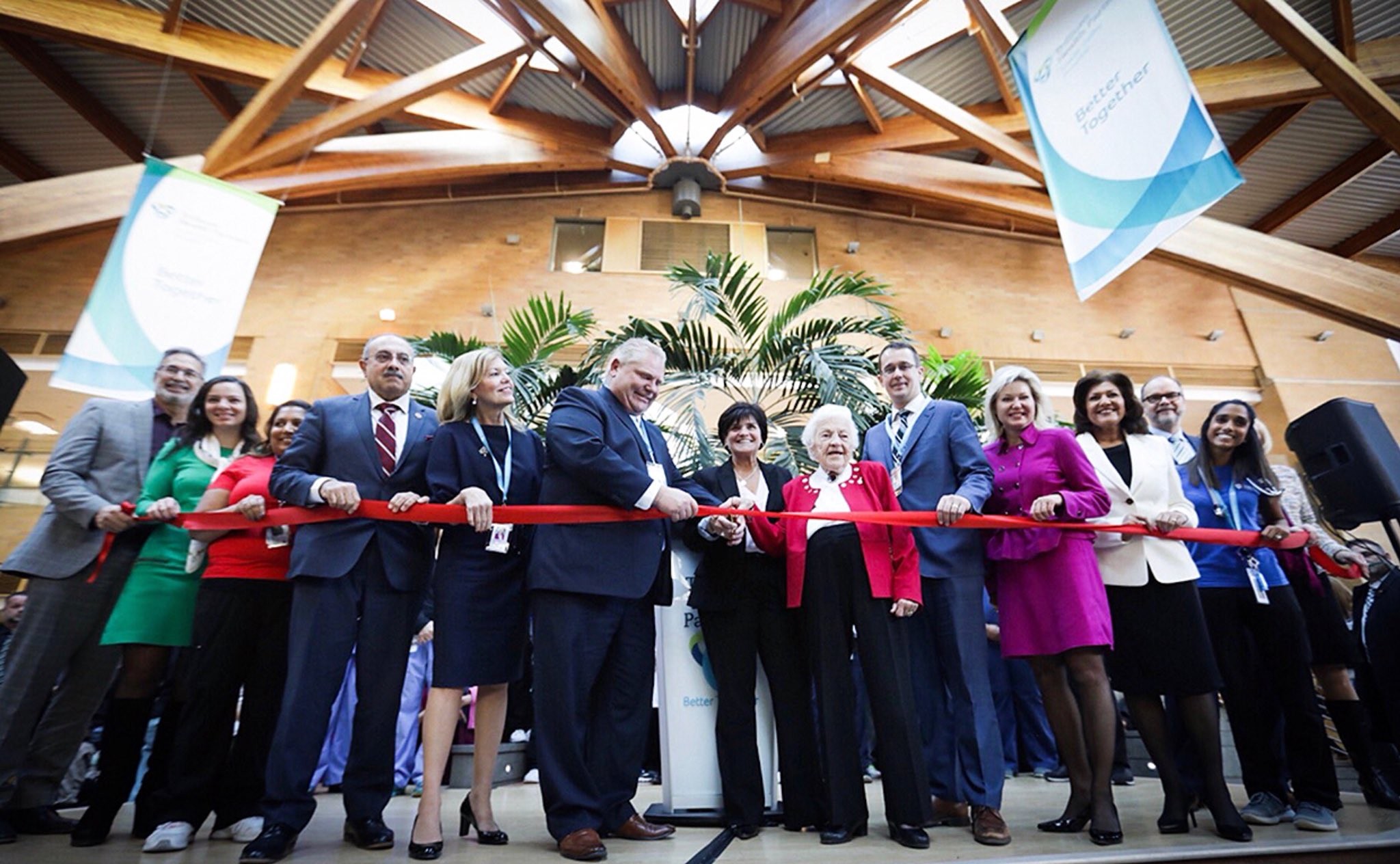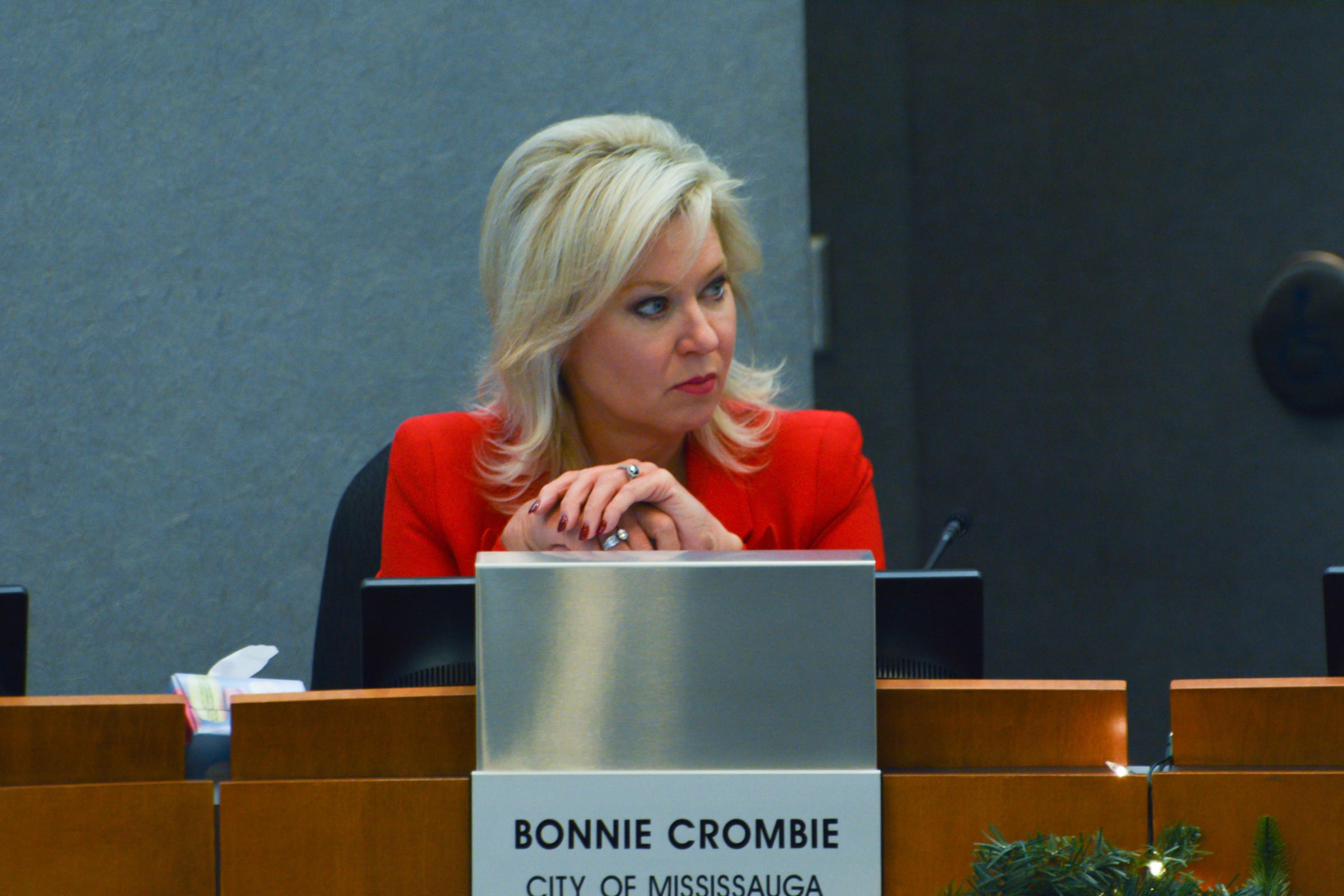
As its population grows, Mississauga would be wise to start saving for future hospital projects
In Peel, Brampton repeatedly dominates healthcare headlines. As the region’s second largest city, with just one full service hospital, Brampton is considered the epicentre of Ontario’s hallway healthcare crisis.
Many in Mississauga would be forgiven for feeling a certain sense of relief. Although the city faces challenges when it comes to areas such as its infrastructure gap, its local healthcare system is in comparatively decent shape.

Premier Doug Ford cuts a red ribbon in celebration of a Credit Valley Hospital expansion opening in November 2018
While Brampton has suffered debilitating funding shortages from the province and disorganization within the local William Osler Health System, Mississauga has seen the opposite. In November 2018, the newly elected Premier Doug Ford visited the city to open an expansion at Credit Valley Hospital, which more than doubled its emergency department. As recently as December 2019, the province identified land as a prime location for a new long-term care facility, set to feature 220 long-term beds and 10 additional residential beds.
However, rosy as recent announcements have been, a storm is coming.
Population projections for Mississauga, proudly announcing one major residential development after another, are set to skyrocket. Trillium Health Partners (THP) currently receives around 1.7 million patient visits each year, with its emergency visits increasing 14 percent across the past five years alone.
According to THP, despite some provincial money being spent, “investments have not kept pace with the growth and changes in [the] community.” The health network’s Strategic Plan (2019-2029) describes it as “under-resourced for the size and needs of the community,” adding that no hospital network in Ontario will receive more demand for acute services across the next two decades.
According to Health Quality Ontario, a government resource, standards at THP are already feeling the strain. The province’s target time for patients to be admitted from the emergency room is eight hours, a target that is met for 33 percent of patients. For THP, the average time is 21.2 hours at Mississauga Hospital, even longer than Brampton Civic, ranking it 100 out of 113 hospitals included in the data. Meanwhile, only eight of the included hospitals have worse averages than 105th placed Credit Valley Hospital, where patients wait for an average of 23.7 hours.
By 2041, the communities in Mississauga and Halton that THP serves are set to grow by around 45 percent, an increase that translates into roughly one million new residents. The majority of the population increase will take place before 2035, with 650,000 extra citizens projected in the area. This increase will see THP’s catchment rise from 2.2 million to 3.2 million by the early 2040s.
Across the next 10 years, THP has a plan to add just over 500 new beds to its existing facilities, while also searching for efficiencies. As Brampton desperately lobbies the province to provide it with the means to construct a new hospital or expand Peel Memorial, THP seems content at the early stages of construction planning. The network’s 10 year strategic plan sets out to redevelop Mississauga Hospital, Queensway Health Centre and “maximize capacity” at the recently renovated Credit Valley Hospital, also adding the aforementioned long-term care facilities. In total, the network expects this to bring its total to almost 2,000 beds by 2029.
These plans (not including the construction of a new, fully functioning hospital), will require major capital for construction, expansions that will not come cheap.
Despite these plans, the sheer scale of projected growth remains an issue. “It is still not enough as wait times continue to grow, patients are cared for in unconventional spaces and access issues continue to impact elective care, such as hip and knee surgeries,” the strategic plan reads.
Nowhere in THP’s plan for the next decade is there explicit reference to a new hospital, but the writing’s on the wall. With its senior population set to increase 133 percent by 2041, alongside one million new residents, maximizing spaces in current facilities can only go so far. Plans to add physical space to its existing stock will require costly construction work.
THP told The Pointer it is currently “in the planning stages” of a “major redevelopment,” adding that it is “working closely with our government partners on this project, including timing.”
A spokesperson for the Ministry of Health confirmed this, saying government approval is required to initiate the construction of hospital infrastructure projects.
Politicians and planners in Mississauga just need to glance up the road at Brampton to understand what happens if they ignore their growing population and don’t put away capital for upcoming construction needs. The city’s northern neighbour has sleepwalked into a healthcare crisis and poor planning in Mississauga could result in the same.
The level of investment required by municipalities to construct new hospitals within their borders varies. Brampton Mayor Patrick Brown recently told The Pointer he had been informed by the province that Queen’s Park requires a contribution of 25 percent to the construction of future hospitals in both of Peel’s cities. Despite a series of questions from The Pointer, provincial spokesperson for the Ministry of Health David Jensen was unable to directly confirm Brown’s assertion — or deny it.
“The ministry has a capital cost share policy in which hospitals are expected to cover a portion of costs,” Jensen said. “Hospital share could come from revenue generation, fundraising or municipal contributions. Generally, a hospital’s share is in the range of 20% of total project cost.”
Confusingly, he added the province typically covers 90 percent of eligible construction costs. “Where a hospital chooses to add non-sharable costs, the local share will increase accordingly,” he added. “Municipalities may choose to support hospitals by contributing to the hospital’s local share; however, there is no set guideline on how much a municipality is expected to contribute.”
Technically, the province does not mandate cities to come up with the additional costs for hospitals, instead requiring funds to come from the health network. In most cases, the health network turns to its host city to ask for the cash, as William Osler has done in Brampton.
Speaking to The Pointer about growing healthcare issues in her city, Mississauga Mayor Bonnie Crombie said she was aware of the pressures on local healthcare providers. “We are aware Trillium Health Partners faces major capacity challenges and has a plan to grow and expand our hospitals,” she said by email, referencing the network’s 10 year plan to find extra beds and efficiencies with provincial support. “While healthcare is not within municipal jurisdiction, it’s a major part of the well being of our residents and quality of life. I have been vocal for years about the importance of the province building healthcare to meet the demands of our community today and in the future.”

Mississauga Mayor Bonnie Crombie
Raising some questions around the Ontario cost sharing model for an expansion, she added: “The 25 percent figure has not been raised to me by the province at present, no formal ask of the city has been made by Trillium."
Although it’s unclear exactly how much Mississauga would be asked to chip in for a new hospital or THP’s planned expansions, it seems certain some cost would fall upon the municipal government.
A quick look at Mississauga’s recent major developments demonstrates just how many people will soon rely on THP’s services. Oxford Properties’ recently announced Square One District, which, across the next few decades, could welcome upwards of 35,000 new residents in 18,000 units. Meanwhile, Lakeview Village is planning to host 20,000 people in 8,000 spaces. The Brightwater development in Port Credit plans 2,500 condos and 400 new townhouses, with M City continuing to build in the city’s downtown core.
To avoid the delays and roadblocks Brampton’s health system has been beset by, it would be prudent for the city to begin squirreling money away for the project now. With hungry developers set to profit massively from the aforementioned projects, development charges would be a sensible place to begin saving.
However, a spokesperson for the City of Mississauga said the city does not currently have a development charge for hospitals. “They are a provincial responsibility,” the spokesperson told The Pointer, adding the construction of any hospital would be subject to the city’s own development fees and approval process.
Asked by The Pointer if THP expected the province to completely fund its expansion plans, a spokesperson said it does not. Alluding to the money Mississauga will need to put aside, the spokesperson added: “The Ministry of Health (MOH) requires every hospital project in Ontario to include financial contributions from the local community.”
As THP braces for a major population increase of 45 percent by 2041, construction will be key. For now, that plan revolves around adding to its current infrastructure, but eventually that will change. It is up to Mississauga to consider incoming development applications in the context of an increasing population that will rely on the area’s healthcare network and work to make private developers pay their fair share.
Email: [email protected]
Twitter: @isaaccallan
Tel: 647-561-4879
Submit a correction about this story


